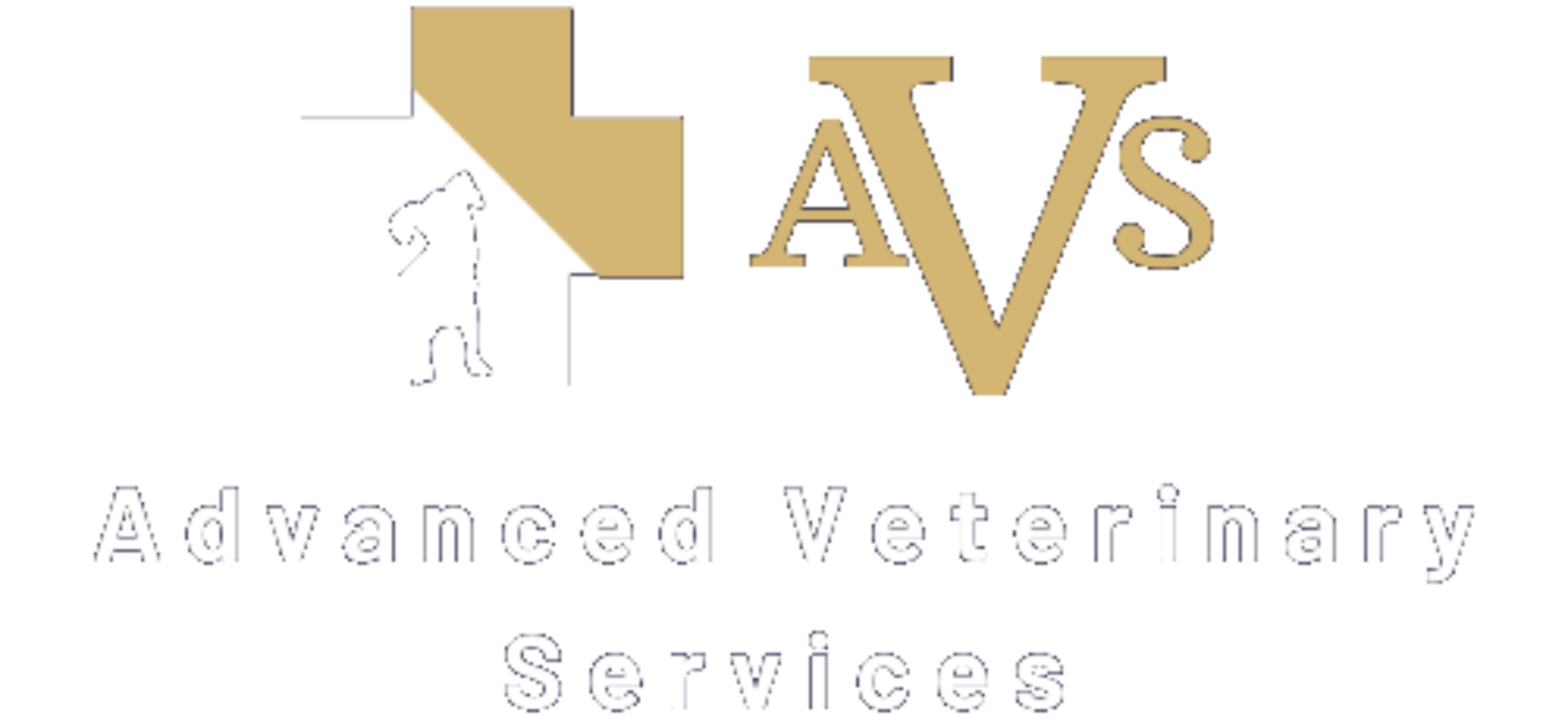We offer a dedicated service for the diagnosis, grading and treatment of Brachycephalic Obstructive Airway Syndrome (BOAS).
Gabriella has a special interest and many years of experience in dealing with brachycephalic dogs affected by BOAS.
Moreover, she has undertaken advanced training in BOAS and is a recognized assessor for The Kennel Club & University of Cambridge Respiratory Function Grading Scheme.
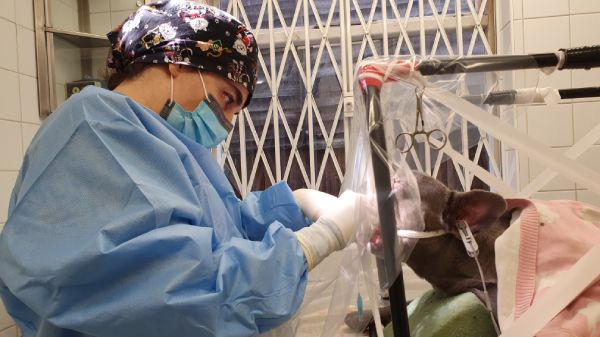
What is BOAS?
BOAS stands for Brachycephalic Obstructive Airway Syndrome.
Brachycephalic literally means short head (‘brachy’ meaning short, and ‘cephalic’, meaning head).
French bulldogs, English bulldogs and Pugs are most commonly affected by BOAS. However, other breeds such as Boston terriers, Shih Tzus, Pekingese and some cat breeds can also be affected by the condition.
The skull of these breeds has been shortened via selective breeding but the soft tissues inside their nose and throat has not reduced in size proportionately therefore causing a partial obstruction of the airway and making difficult for them to breathe.
BOAS is a complex progressive disorder that can impair a dog’s quality of life, their ability to exercise, play, eat and sleep.
Primary anomalies
The main primary anatomic anomalies are:
- stenotic nares (narrow nostril),
- excessive turbinate tissue (excessive tissue in the nasal cavity)
- thickened and elongated soft palate,
- macroglossia (oversized tongue)
- hypoplastic trachea (narrow windpipe)
Secondary problems – Laryngeal collapse
Due to the primary partial airway obstruction brachycephalic dogs will require a much greater effort than normal in order to breathe. This creates increased negative pressure and also cause turbulent airflow in the area of the larynx (voicebox). This structure is made of cartilage and overtime, these cartilages can lose their strength and rigidity making it harder for the larynx to be opened wider when more air is needed in the lungs. This can lead to severe breathing difficulties.
Grading
Veterinary surgeons grade the severity of collapse from 1 to 3, with 3 being the most severe.
The first stage of laryngeal collapse (grade 1) is when the laryngeal saccules (little pockets of tissues which usually sit at each side of the vocal cords) are pulled out and sit just in front of the larynx partially obstructing the airflow.
As BOAS get progressively worse it is very important to recognize the signs as soon as possible.
Symptoms
Symptoms to watch out for are:
Heavy noisy breathing (especially during excitement or exercise)
Exercise intolerance (especially in hot weather)
Heat intolerance – Tendency to overheat
Heat intolerance can be another major problem particularly during summer/hot days when brachycephalic dogs can potentially collapse. This is because dogs can’t sweat through their skin like we do and when is hot they cool down mainly by panting. Unfortunately, short nose breeds often cannot do this efficiently enough and they start to overheat and this can potentially be life threatening.
Sleeping disorders
While dogs can breathe through either the oral cavity or nasal cavity when they are awake; when they are asleep can only breathe through their nose. Therefore obstruction of their nasal airway can lead to interrupted sleep or sleep apnoea. Affected dogs may wake up multiple times during their sleep, and they may sleep in certain positions (chin elevated, neck extended) that will open up the nasal airway to relieve the obstruction. Some dogs may go to sleep holding a toy in their mouth so that they can breathe through their mouth.
Long-term, interrupted sleep due to nasal obstruction causes fatigue and a reduced quality of life.
Regurgitation
Another very common symptom shown by many brachycephalic dogs is regurgitation. This is the passive bringing up of stomach fluid or undigested food from the stomach, via the food pipe (oesophagus), out of the mouth. However, sometime dogs can have ‘silent’ regurgitation where the fluid or undigested food arrives in the mouth and it is swallowed straight back down (lips smacking or gagging are often associated with silent regurgitation). While regurgitation can be a primary problem, in many cases it is related to BOAS. Indeed, due to the partial airway obstruction brachycephalic dog will create high negative pressure in the chest during breathing, particularly during exercise or excitement. In turn this high negative pressure ‘sucks’ the stomach content. Usually regurgitation will improve (and sometimes it may resolve) after BOAS surgery as the negative pressure decreases.
Collapsing episodes
Cyanosis
In the worst cases the tongue/gums may become a bluish colour (cyanotic) due to the lack of oxygen in the bloodstream.
Unfortunately, often owners do not recognise the signs of the disease and if signs are ignored, they sadly progress making things much worse and much more difficult to treat.
For this reason, we advise that brachycephalic dogs are regularly assessed by an experienced surgeon.
Brachycephalic Airway Syndrome Assessment Service & Surgery
What happens during the assessment?
During the appointment we will go through the history of the pet with the owners, we will use a specific questionnaire and we will carry out a series of tests including an exercise tolerance test. All this will allow us to obtain a functional grading that will tell us if the dog is suffering from this syndrome, how severe it is and we will discuss medical and surgical options when appropriate.
BOAS surgery
Unfortunately, surgery cannot cure BOAS but instead aims to alleviate the symptoms, improve the quality of life and reduce the likelihood of further deterioration.
BOAS is the result of multiple abnormalities within the upper and lower airways. Some of these abnormalities can be improved with surgery (e.g. narrow nostrils, overly long soft palate) but others are impossible to treat (e.g. narrowed windpipe, oversized tongue).
Most dogs suffering from clinical signs of BOAS that receive prompt appropriate treatment can experience a significant improvement in exercise tolerance and ease of breathing.
Early surgery, carried out before the laryngeal collapse has become severe, should maximise the benefit from surgery and minimise the risks of significant laryngeal collapse later in life.
Based on finding during examination, BOAS surgery may include a number of surgical procedures to address elements of upper airway obstruction:
Widening the entrance to the nostrils
Narrow (stenotic) external nostrils are a common component of BOAS and both the external nostrils and the space behind them are widened surgically to improve the airflow through the nares.
Shortening and thinning the soft palate
The excess length of the soft palate can be reduced by surgery in order to reduce the interference with air flow into the larynx (voice box). When the soft palate is also thickened a special plastic surgery (modified folded flap palatoplasty ) can be performed to obtain shortening and thinning of the soft palate.
Everted tonsils
If the tonsils are hypertrophic (enlarged) and protrude into the back of the mouth they may further narrow the airway. Some cases may benefit from tonsillectomy (removal of the tonsils).
Removal of the laryngeal saccules (laryngeal collapse grade 1) if they have been pulled inside out.
Sometime, in dogs that do not respond well enough to conventional surgery, advanced laser surgery (LATE) may be used to reduce further obstruction inside the dog’s nose where present.
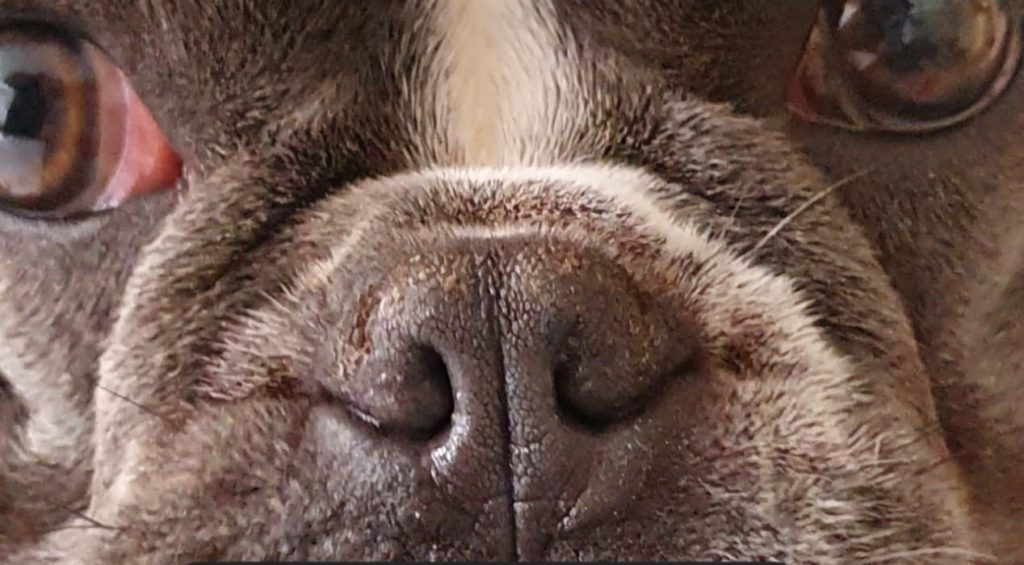
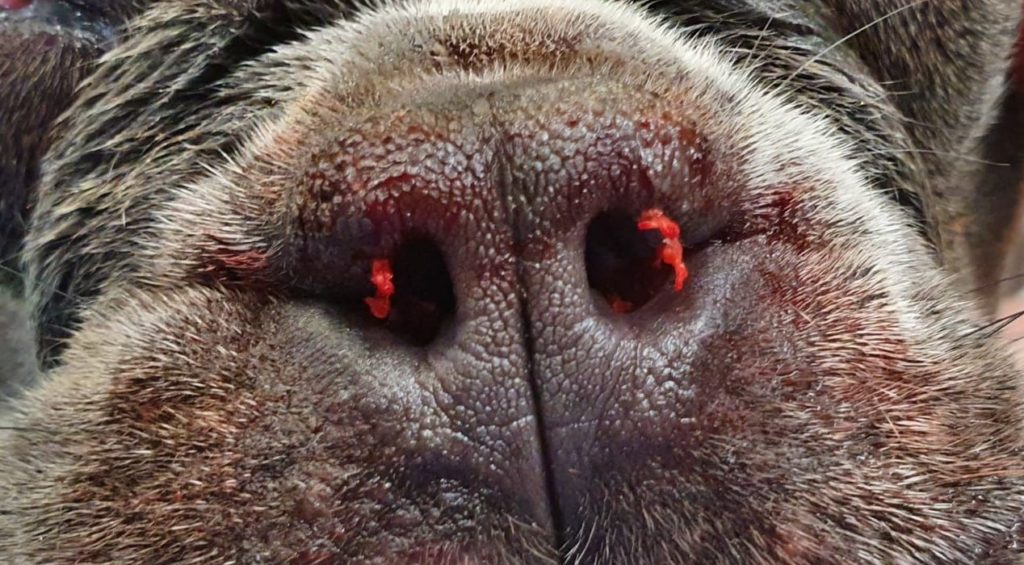
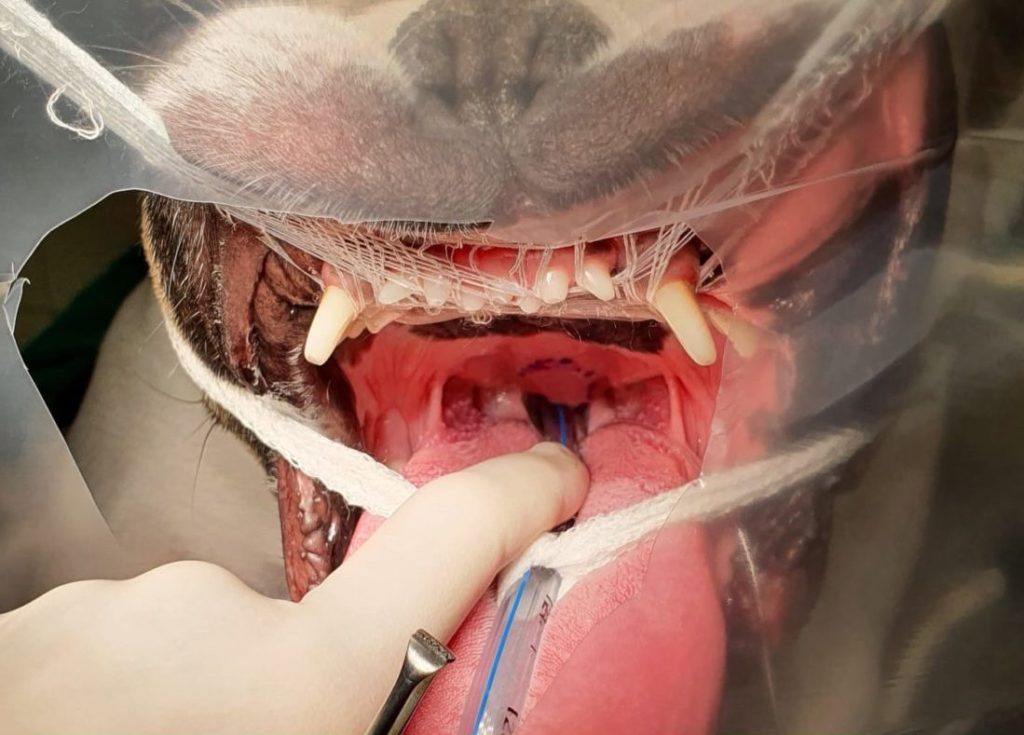
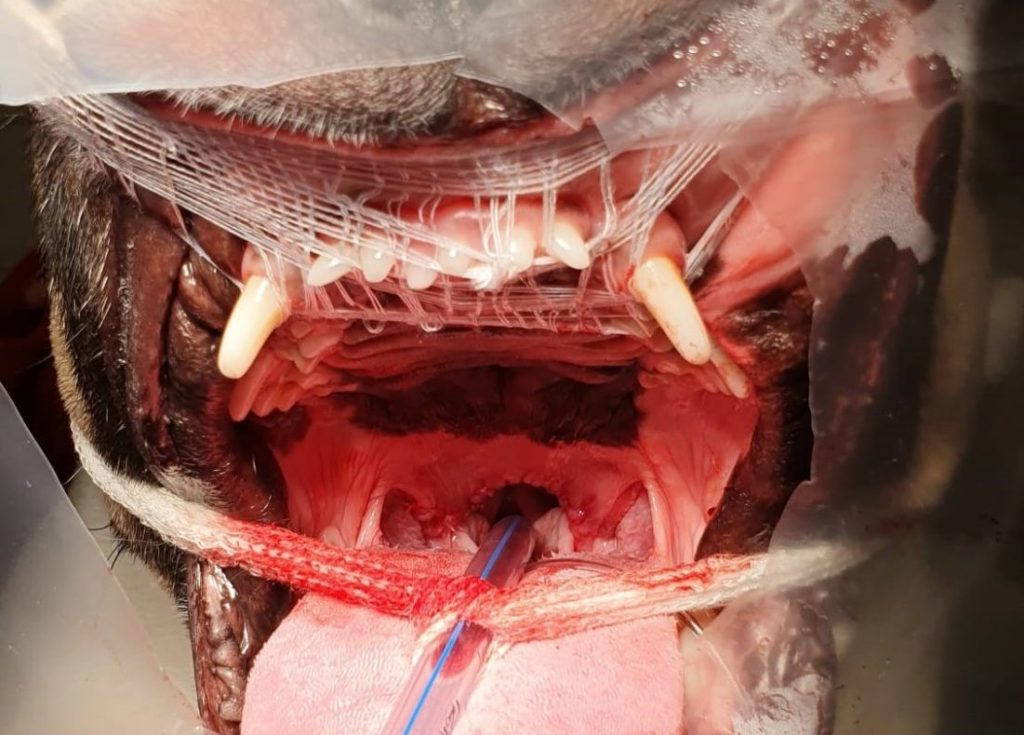
Post-BOAS surgery precautions
As surgery doesn’t cure BOAS, long term lifestyle modifications are often required:
- affected patients should be kept lean
- precautions should be taken to avoid over-heating
- using a harness instead of a collar to avoid putting pressure on their airway
BOAS and weight management
Many dogs with BOAS are overweight or obese, which may in part be due to their reduced ability to exercise normally.
Weight loss can dramatically improve the airflow through the pharynx and neck and MUST form part of the treatment protocol in overweight patients.
